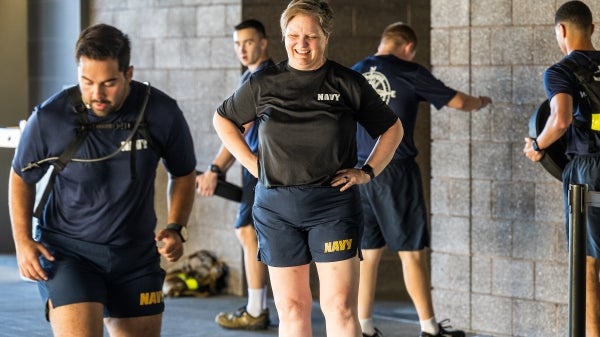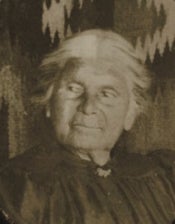ASU alum discovers her connection to the 'Mexican Mother of Tempe'
ASU alumna Sonia Reyes Corella (far right) and her children (from left) David Callahan and Danielle Corella can trace their family history to Mexican pioneer Manuela Sánchez Sotelo, who contributed to ASU's founding. Courtesy photo
Roots can be hard to untangle.
It took Sonia Reyes Corella more than 40 years to discover she is a descendant of a Mexican pioneer — a woman who contributed to the founding of Arizona State University.
But it didn’t take long after that to realize how similar they are.
“I’m shocked, and I’m wondering why I’ve never heard of this woman,” Reyes Corella said.
Reyes Corella, 55, is an ASU alumna who has mentored several ASU students and volunteered at ASU’s Hispanic Convocation ceremonies.
Now, she's hoping to establish a Los Diablos alumni chapter scholarship in honor of her third great-grandmother, Manuela Sánchez Sotelo.
The ‘Mexican Mother of Tempe’ and her contributions to ASU
Manuela Sánchez Sotelo is known as the “Mexican Mother of Tempe.” Born in Tubac, Arizona, she eventually became a farmer, a prominent landowner and an ambassador of sorts to Mexican families who settled in the Tempe area.
Her path to Tempe started when her husband, Tiburcio Sotelo, and two sons left the Tubac area for irrigation work in the Phoenix area. In the early 1870s, Tiburcio Sotelo soon bought a small share in the Tempe Irrigating Canal Company for $200, money which he used to purchase 160 acres of land located on the southeast corner of present-day Rural Road and east University Drive.
But not long after, tragedy struck. Within the same year, her husband died of an illness, one son drowned on his horse in the Salt River, and the other son was killed by members of an Apache tribe while carrying mail along a Tucson–Maricopa route.
After these losses, Sánchez Sotelo decided to come to Tempe anyway and settle her remaining nine children on her husband’s newly purchased land.
Working alongside Anglo pioneers, she planted wheat and other garden crops. She welcomed Mexican families and farmers into the community that is now Tempe by giving them seeds to grow their own crops. She was a shareholder in the Tempe Irrigating Canal Company, becoming one of the few Mexican women in the Salt River Valley to hold water rights to her property.
She also was a staunch supporter of education.
In 1885, the bill establishing the Arizona Territorial Normal School — now known as ASU — was passed. According to archivist, historian and ASU Professor Emeritus Christine Marin, Sánchez Sotelo contributed to a $500 donation for her neighbors George and Martha Wilson, in exchange for 20 acres of their land to be used to build the school.
Later, her two granddaughters — Anna Manuela Miller and Clara Maria Miller — were among the first Mexican American ASU alumni.
“Manuela’s story of strength and power still resonates today,” Marin said. “She is the manifestation of everything that is Latino, Hispanic, Chicano — and thanks to her, ASU has become that standard bearer of higher education for all.”
Family history uncovered
Growing up in Phoenix, Reyes Corella had no knowledge of this history or her connection to it until her uncle, the historian in the family, pulled out a scrapbook about 10 years ago and told her about Manuela.
The two women's lives are strikingly parallel: single mothers, property owners, education supporters and both persevered under painful circumstances.
“It kind of makes you stand up a little taller and pull your shoulders back,” Reyes Corella said. “I guess it’s in my DNA. I never thought I had limits.”
After receiving a scholarship to study engineering in 1987, Reyes Corella found out she was pregnant.
“It was a hard time, but I persevered,” Reyes Corella said.
Just over six years later, she graduated from ASU with a bachelor’s degree in engineering from the College of Engineering and Science (now the Ira A. Fulton Schools of Engineering). In 2001, she earned a master's degree with a focus in industrial engineering.
Her education opened doors normally closed to Latinas in the engineering field. At one point, she worked at Intel as a supervisor in the early semiconductor production years.
Reyes Corella’s children also succeeded at ASU. Her daughter, Danielle Corella, 36, is an opera singer and professor who studied music at ASU’s Herberger Institute for Design and the Arts in 2006. Her son, David Callahan, 26, graduated in 2019 from The College of Liberal Arts and Sciences and is a psychotherapist practicing in Seattle.
ASU is where Latino students thrive
While Reyes Corella says she received little to no mentorship during her studies at ASU, the efforts to recruit Latino students and provide resources for them have strengthened throughout the years.
Hispanic/Latino enrollment at ASU has increased by 130% in the past decade. The university is designated a Hispanic-Serving Institution by the Department of Education, a distinction reserved for colleges and universities where over 25% of undergraduates identify as Hispanic/Latino.
Have you heard of the Mexican mother of Tempe?
Sonia Reyes Corella talks about her connection to Manuela Sanchez Sotelo on an episode of “La Platica.”
“ASU has made significant strides over the past decades to enroll more students from Hispanic backgrounds and support them toward their goal of earning a college degree,” said Nancy Gonzales, executive vice president and university provost. “However, the story of Manuela Sánchez Sotelo shows that the contributions that the Hispanic community has made to ASU have been part of the ASU story since our founding.
“And, as a first-generation college graduate from ASU and as a Latina myself, I recognize that my own ASU journey was impacted by Manuela Sánchez Sotelo. It brings me great pride to honor her legacy by advancing our ASU Charter commitment of expanding access to all deserving and qualified students, regardless of their background.”
Now that she’s uncovered her rich family roots, Reyes Corella hopes her third great-grandmother’s story inspires other students to dream big and get their education.
“This is our school. A lot of people think going to ASU is for rich people or Anglos or that they’re going to feel out of place, but we’ve been here from the beginning,” Reyes Corella said. “This has always been our school.”
More Sun Devil community

These real-life heroes found educational support through ASU Online
When “God Bless America” played at Dani Bermudez’s naturalization ceremony, the moment gave her chills and cemented her resolve to one day serve in the military.The Colombia native enlisted in the…

Sun Devils in the sky
“Today was probably one of the most rewarding days I’ve had at ASU."That was the sentiment given by Andrew Vandertoorn, a C-17 evaluator pilot, first officer and 2002 Arizona State University…

A decorated life: Navy ROTC professor demonstrates leadership excellence
Katrina Hill has received just about every type of military and academic accolade there is and has demonstrated leadership capabilities throughout her time in the service.A Harvard and MIT Fellow. A…

